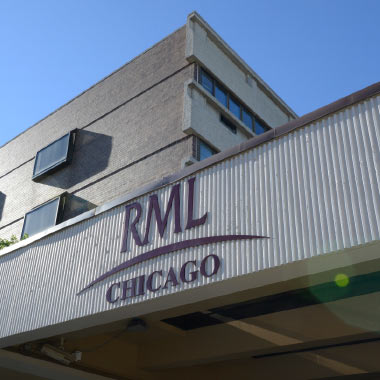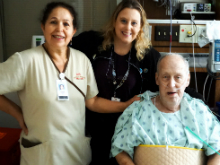 The patient experience cannot be achieved by one person alone in the hospital setting. It is the responsibility of all – nurses, physicians, and therapists, as well as those who support the care experience, from food and nutrition services and the environmental services team, to the individuals processing billing and medical records.
The patient experience cannot be achieved by one person alone in the hospital setting. It is the responsibility of all – nurses, physicians, and therapists, as well as those who support the care experience, from food and nutrition services and the environmental services team, to the individuals processing billing and medical records.
As an environmental service tech at RML, Emma Cortez has an important job. She is responsible for cleaning, sanitizing, and disinfecting patient rooms and care units, preventing the spread of infection. She regularly interacts with infectious, biological, and sharp, unclean materials. More importantly, she regularly interacts with patients.
The power of a clean room can have a significant impact on the patient experience. The power of delivering compassion and empathy while cleaning that room has even more impact. Father daughter duo Patrick and Cathy recently experienced Emma’s exceptional care.
“Emma was assigned to clean my father’s room. While cleaning his room one day, she starting talking to my dad and had many kind words to say. She told him that he was a strong man and commented on the progress she saw him making with his therapists. She also relayed his progress to me, and reassured me of his strength. My father greatly appreciated her kindness.”
Prior to Patrick’s discharge, Cathy recognized the work of Emma and many staff on Hinsdale’s B1 unit who shared kindness, compassion, and empathy while caring for her dad and helping him reach his goal of returning home. From the patient care technicians to the nurses, physicians, and environmental service techs, each staff member played an important role in her father’s patient experience.


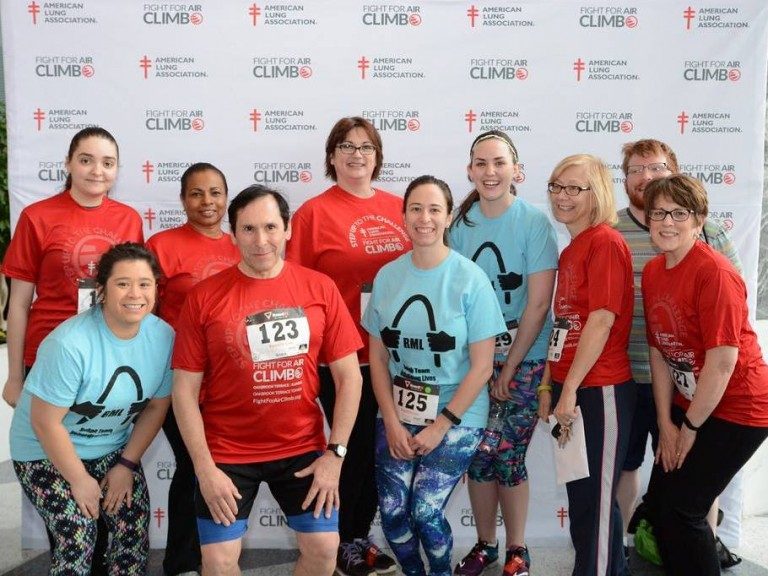
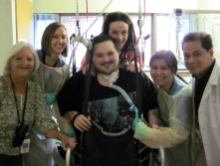 Phil arrived at RML with respiratory failure, weighing 732 pounds. He worked hard to wean from the ventilator and breathe on his own again, all while losing 250 pounds.
Phil arrived at RML with respiratory failure, weighing 732 pounds. He worked hard to wean from the ventilator and breathe on his own again, all while losing 250 pounds.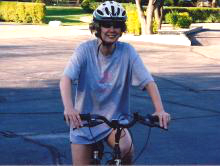 On March 20, 2003 I was admitted to RML Specialty Hospital after a 28-day stay in Advocate Good Samaritan Hospital’s Intensive Care Unit. I was battling streptococcal pneumonia and breathing with the help of a ventilator.
On March 20, 2003 I was admitted to RML Specialty Hospital after a 28-day stay in Advocate Good Samaritan Hospital’s Intensive Care Unit. I was battling streptococcal pneumonia and breathing with the help of a ventilator.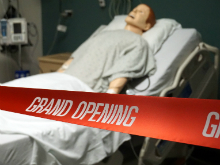 Mannequin simulations use high fidelity simulators – mannequins that breathe, with breath sounds, heart tones, and palpable pulses. The mannequin has a monitor that displays EKG, pulse oximeter, blood pressure, arterial wave forms, pulmonary artery wave forms, and more. Sage the Sim Man simulates vital cues, providing real-time information and allowing for virtual feedback.
Mannequin simulations use high fidelity simulators – mannequins that breathe, with breath sounds, heart tones, and palpable pulses. The mannequin has a monitor that displays EKG, pulse oximeter, blood pressure, arterial wave forms, pulmonary artery wave forms, and more. Sage the Sim Man simulates vital cues, providing real-time information and allowing for virtual feedback.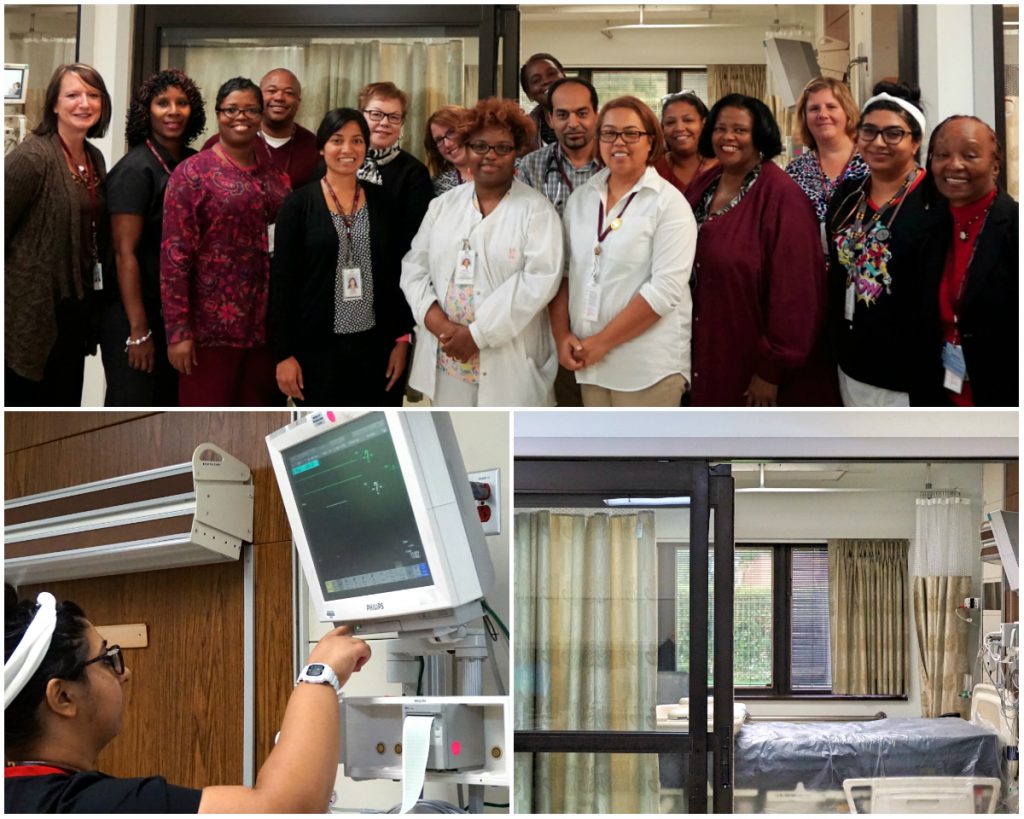
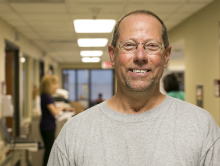 Meet John. Seven years ago, John had double lung reduction surgery. Diseased tissue was cut out of both of his lungs, reducing the size and capacity of his lungs, in hopes of saving his life. The surgeries were his only option at overcoming the emphysema that was destructively taking his breath away.
Meet John. Seven years ago, John had double lung reduction surgery. Diseased tissue was cut out of both of his lungs, reducing the size and capacity of his lungs, in hopes of saving his life. The surgeries were his only option at overcoming the emphysema that was destructively taking his breath away.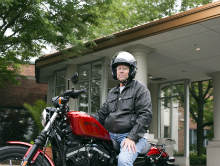 Following his surgeries, John spent time at RML to wean from the ventilator and learn to breathe on his own again. John is a survivor: he fought through the anxiety of learning to breathe again without the help of a machine, determined to get home to be with his daughter and dog.
Following his surgeries, John spent time at RML to wean from the ventilator and learn to breathe on his own again. John is a survivor: he fought through the anxiety of learning to breathe again without the help of a machine, determined to get home to be with his daughter and dog.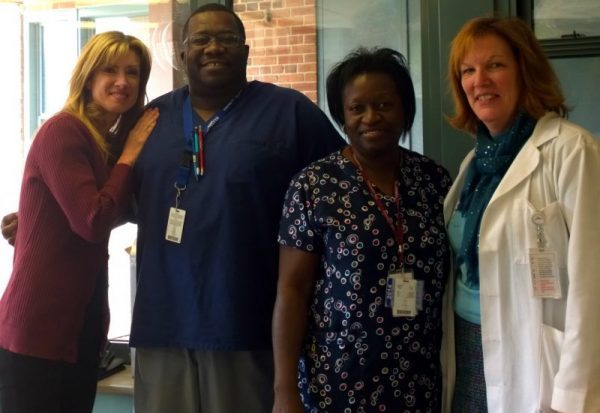
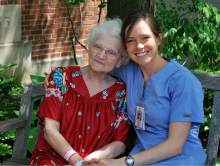 “Care, courage, loving and most of all respect for each other,” Dolores gleefully exclaimed as she reflected on her time at RML and the staff who saved her life.
“Care, courage, loving and most of all respect for each other,” Dolores gleefully exclaimed as she reflected on her time at RML and the staff who saved her life.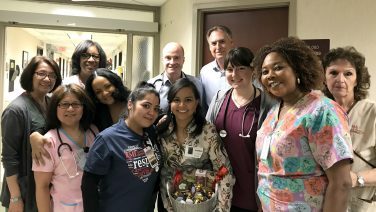 April Braker was a patient with RML October 2018. She came to us from NMH with a rare autoimmune encephalitis. April came back to visit November 2019 , just a little over a year since she left RML for Acute Rehab.
April Braker was a patient with RML October 2018. She came to us from NMH with a rare autoimmune encephalitis. April came back to visit November 2019 , just a little over a year since she left RML for Acute Rehab.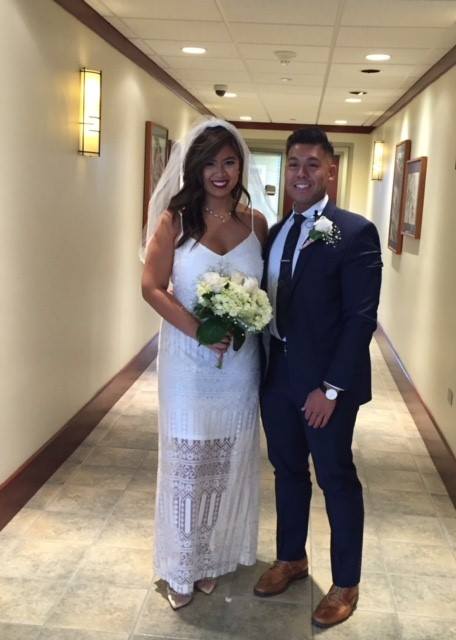 This weekend at RML Specialty Hospital Hinsdale we were truly honored to share in a very touching moment for one of our patients. Shara, the daughter of one of our patients, brought her wedding party and had her wedding ceremony at RML so her ailing father could attend. Per Shara, “We planned this ceremony in less than 12 hours and everything worked out perfectly. It was nice to share the moment with the staff that took care of my dad, we really appreciated everyone’s kindness and compassion, especially during my dad’s final days there.” We wish you and your new husband a lifetime of happiness Shara and thank you for allowing us to be part of your special day with dad.
This weekend at RML Specialty Hospital Hinsdale we were truly honored to share in a very touching moment for one of our patients. Shara, the daughter of one of our patients, brought her wedding party and had her wedding ceremony at RML so her ailing father could attend. Per Shara, “We planned this ceremony in less than 12 hours and everything worked out perfectly. It was nice to share the moment with the staff that took care of my dad, we really appreciated everyone’s kindness and compassion, especially during my dad’s final days there.” We wish you and your new husband a lifetime of happiness Shara and thank you for allowing us to be part of your special day with dad.